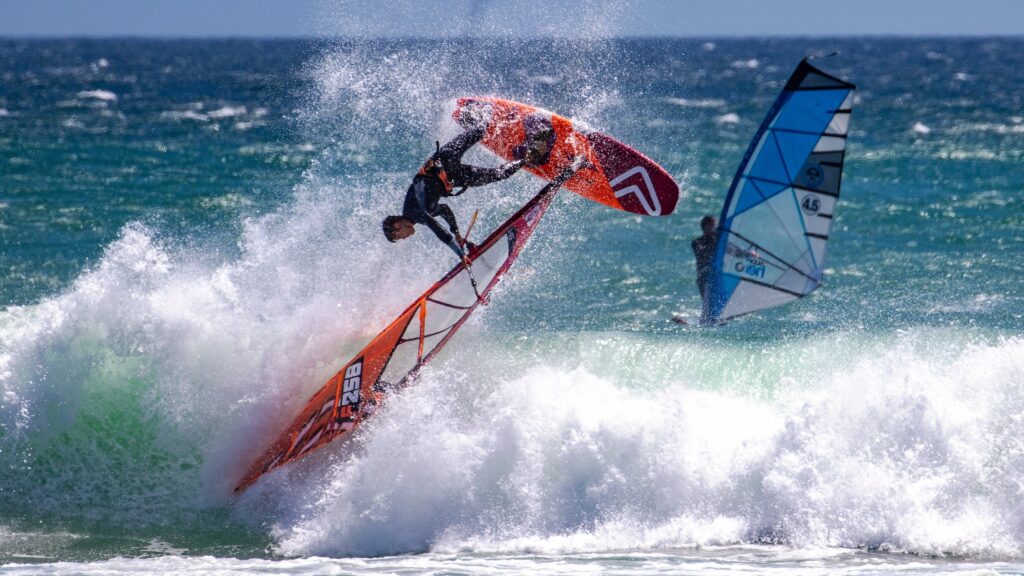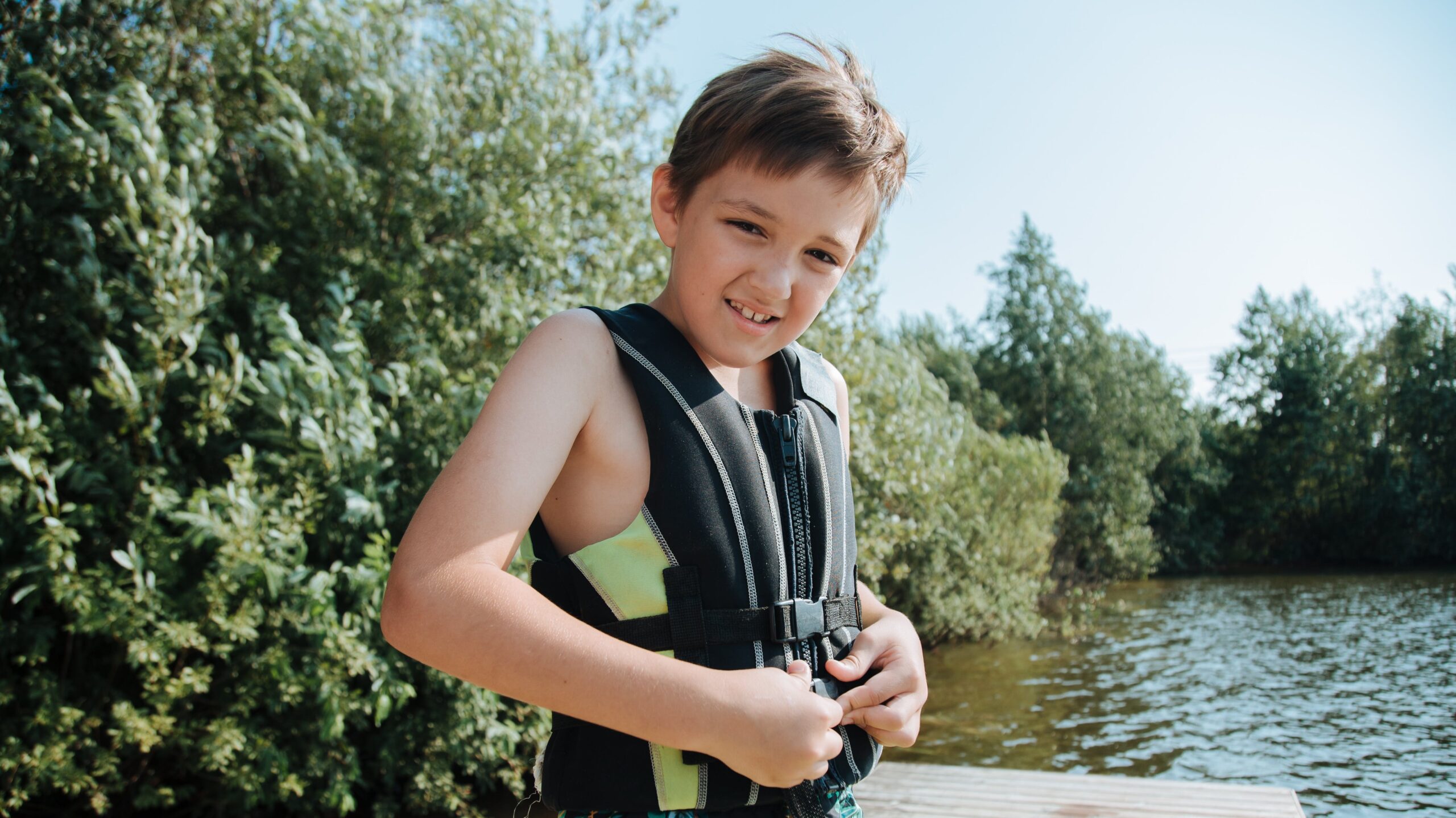
Table of Contents
Imagine feeling the rush of the wind against your face as you glide effortlessly over the water, the sun reflecting off the shimmering waves. This is the allure of windsurfing – a captivating blend of surfing and sailing that beckons adventurers to harness the power of the wind. However, beneath the thrill lies a pertinent question: Is windsurfing dangerous?
As with any adventure sport, windsurfing presents its challenges, demanding a dance with the elements and a keen understanding of its dynamics. In this exploration, we’ll unravel the exhilaration and address the fundamental question that echoes in the minds of both seasoned windsurfers and curious beginners alike: Does the thrill of windsurfing come with an inherent danger? Let’s navigate the waters of windsurfing safety and discover how this thrilling sport can be enjoyed responsibly and securely.
I. Why is Windsurfing Considered as Dangerous?
Windsurfing, with its dance between wind and water, is undoubtedly exhilarating, but it comes with its share of challenges that contribute to its reputation for being a daring endeavor.
Picture yourself out on the open water, the wind dictating your pace and the board responding to your every move. The very essence of windsurfing lies in its dynamic nature, where the conditions are in constant flux. Sudden gusts of wind can turn a serene ride into an adrenaline-pumping escapade, demanding split-second decisions.
It’s this dynamic quality that gives windsurfing its edge but also raises the stakes. Changing weather conditions, unexpected gusts, and the need for quick and precise maneuvers contribute to the perception that windsurfing can be a risky affair.
So, why is windsurfing considered as dangerous? It’s the very essence of its unpredictability that adds an element of risk, requiring participants to embrace not just the thrill but also a healthy respect for the elements. As we delve deeper into the world of windsurfing, we’ll uncover how understanding and navigating these challenges can transform a potentially perilous activity into a thrilling and controlled adventure.

II. The Risks of Windsurfing
Embarking on the exciting world of windsurfing is like stepping into an arena of thrills and challenges. It’s a ride that comes with its share of risks, and being aware of them is key to ensuring a safe and enjoyable experience. The thing about these risks is that they’re not set in stone; they can change based on your experience, the wind’s mood, and a bunch of other factors. So, it’s crucial always to keep safety in mind and not push yourself into deep waters, both literally and figuratively.
Physical Health
Windsurfing is no walk in the park – it’s a physical workout that can take a toll on your body. Pushing too hard can lead to health hiccups like dehydration, heat exhaustion, or even heart issues. The trick is to stay hydrated, take breaks when needed, and not go overboard with other strenuous activities after your windsurfing session.
Injuries are part and parcel of the game. Falls and collisions can leave you with cuts and bruises, and sometimes, the injuries can be a bit more serious – think concussions or broken bones. So, it’s all about finding that sweet spot between pushing the limits and keeping it safe.
Navigating the Unknown
When you’re out there on the water, there’s more beneath the surface than meets the eye. Rocks, reefs, and sneaky obstacles can turn your windsurfing gig into a bit of an obstacle course. It’s like playing a game of ‘what’s hidden beneath.’ Staying on top of your game means always being aware of your surroundings and sticking to the spots you’re familiar with.
And speaking of hidden things, keep an eye out for underwater buddies like sea urchins and jellyfish – they might not be as welcoming as you’d hope.
Collisions
Windsurfing is not a solo act; there are others out there sharing the wind and waves. If you’re not careful, you might find yourself in a bit of a collision course. Bumping into someone else or getting your lines tangled up can lead to some tricky situations – worst-case scenario, someone might even take an unplanned dip thanks to your kite.
Obstacles
Sometimes, the wind has a mind of its own, and suddenly, you’re speeding through the waves faster than you planned. It’s like the wind is playing a game of ‘catch me if you can.’ This can make avoiding obstacles like buildings, trees, or even a road a bit of a challenge. Even when you’re already in the water, rocks, reefs, and fellow windsurfers can turn into unexpected hurdles. If you’re exploring a new windsurfing territory, it’s always a good idea to check with the locals for potential hurdles and never brave the waters alone.
Equipment Failure
Your windsurfing gear is your trusty sidekick on this adventure, but sometimes, even sidekicks can have a bad day. Gear failure, whether it’s your kite acting up or your board deciding to take a break, can throw a bit of a spanner in the works. And when you’re out in the open water, far from the safety of the shore, it can be a bit of a challenge to fix things up. So, a word to the wise – always give your gear a once-over before hitting the waves and have a backup plan just in case.
Weather
Mother Nature doesn’t always play by the rules, and that’s especially true when you’re windsurfing. The weather can change its mind in a heartbeat, making it a bit of a guessing game. Before you head out, it’s always a good call to check the forecast and keep an eye out for any potential hiccups. If the conditions seem a bit too wild, it might be best to stay on the safe side and stick to the shore. Even when things seem calm, starting slow and gradually upping your game is a smart move, especially if you’re still getting the hang of it. If you’re just starting, it’s like dipping your toes in the water before diving in.
Navigating the risks of windsurfing is a bit like riding the waves – it requires a mix of skill, awareness, and a good dose of respect for the unpredictable elements. Keep safety front and center, stay clued in, and relish the thrill of the adventure while steering clear of potential pitfalls.
III. What Safety Gear for Windsurfing?
Alright, buckle up for the essential part of your windsurfing journey – gearing up for a safe and enjoyable ride. Picture this: the wind in your hair, the waves beneath your board, and you, armed with the right safety gear, ready to take on the windsurfing world. It’s not just about strapping on some gear; it’s about creating a shield against the unpredictable and turning your windsurfing session into a secure adventure.
Life Jacket
First things first – your trusty life jacket. Think of it as your floating companion, ensuring that even if the waves decide to throw you a curveball, you stay afloat. It’s like having a backup plan for the unpredictable dips into the water – a must-have to keep the adventure safe and buoyant.
Helmet
Next on the safety checklist is the helmet. Windsurfing demands agility, and a helmet is your ticket to head protection during those moments of exhilaration and unpredictability on the board. It’s not just a safety accessory; it’s your guardian against potential head injuries, making sure you navigate the winds with a cool head.
Harness
Now, imagine yourself harnessing the power of the wind. That’s where the harness comes into play – a crucial piece of equipment that connects you to the sail. It’s like having your personal anchor, distributing forces and preventing undue strain on your arms. With the harness, you stay connected to the wind’s energy while maintaining stability on the board.
Wetsuit
As you ride the waves, a wetsuit becomes your second skin, and trust me, it’s more than just about staying warm. In cooler waters, it’s your shield against the elements, providing not only comfort but an added layer of buoyancy. It’s like slipping into a protective layer that ensures you’re not just riding the waves but doing it with comfort and style.
Understanding and investing in the right safety gear isn’t just a precautionary measure; it’s a commitment to transforming windsurfing into a secure and thrilling water sport. It’s about ensuring that every windsurfing adventure is not just a test of skills but a celebration of safety, where the wind and waves become your allies rather than adversaries.

IV. Is Windsurfing Safe for Beginners?
Embarking on the windsurfing adventure as a beginner brings a mix of excitement and anticipation. The question lingering in the air: Is windsurfing a safe venture for those taking their first steps onto the board?
The learning curve of windsurfing can be both thrilling and challenging. Beginners often grapple with finding their balance on the board, understanding the nuances of wind control, and mastering the art of turning. It’s a journey that demands patience and a willingness to embrace the occasional splash into the refreshing waters.
Safety for beginners lies in the foundation of proper instruction. Enrolling in a reputable windsurfing school or taking lessons from experienced instructors sets the stage for a secure introduction to the sport. These experts guide novices through the basics, teaching not only the technical skills but also instilling a profound respect for the elements.
Choosing suitable locations for learning further contributes to the safety of beginners. Calm, shallow waters with consistent winds provide an ideal setting for those taking their first wobbly steps on the board. Such environments reduce the likelihood of unexpected challenges and create a supportive space for skill development.
As a beginner, embracing a gradual progression in skill is key. Trying to conquer advanced maneuvers before mastering the basics may increase the risks. Understanding personal limits and gradually pushing boundaries in a controlled manner ensures a safer and more enjoyable windsurfing experience.
In essence, windsurfing can indeed be safe for beginners, given the right approach. With proper instruction, suitable locations, and a mindful progression of skills, the journey from novice to windsurfer can be both thrilling and secure. As we navigate the waters of this vibrant water sport, let’s remember that, like any adventure, the key is to respect the learning process and savor every moment of the exhilarating ride.
Conclusion | Is Windsurfing Dangerous
As we set sail through the dynamic world of windsurfing, we’ve uncovered the essence of its thrill and addressed the looming question: Is windsurfing dangerous? The answer, like the sport itself, is a nuanced dance of elements.
Windsurfing, with its unpredictability, demands a level of respect and understanding. Yes, there are risks – the sudden gusts, the occasional spills, and the ever-present need for vigilance. However, these elements don’t diminish the allure of windsurfing; instead, they add layers to the adventure.
Crucially, we’ve explored how these risks can be managed and mitigated. From the right safety gear, including life jackets, helmets, harnesses, and wetsuits, to the significance of proper instruction and suitable locations – these are the anchors that ensure a secure windsurfing journey.
For beginners, the path is navigable. It’s about embracing the learning curve, enlisting the guidance of experienced instructors, and choosing the right environments for those initial wobbly rides. Windsurfing, when approached with caution and respect for its dynamics, transforms from a potentially dangerous thrill into a rewarding and secure water sport.
In the end, windsurfing is a celebration of the wind, the water, and the joy of mastering their interplay. Yes, it has its challenges, but like any adventure worth undertaking, the risks are an integral part of the journey. So, to those drawn to the call of the winds, fear not. With the right knowledge, preparation, and an adventurous spirit, windsurfing becomes not just a sport but a dance with the elements, a journey where every wave conquered is a triumph of skill and resilience.
